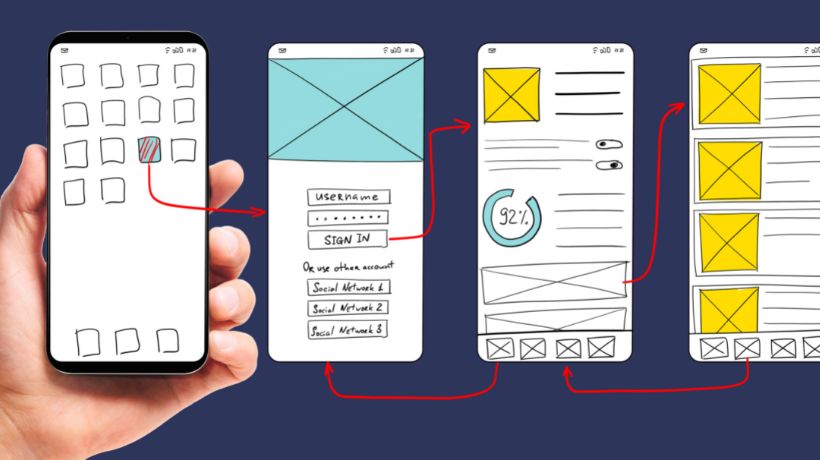With the advent of live streaming apps, such as Bigo Live and Twitch, a new form of communication has arisen. This new form of communication allows people to share their lives with others in real-time. While these apps are still in their early developmental stages, they offer a lot of potential for the future.
In this blog post, we will discuss the key steps involved in developing a live-streaming app and some of the features that you can expect to find in such an app.

How Does a Live-Streaming App Work?
If you’ve ever wondered how live-streaming apps make it possible to broadcast or watch videos in real-time, the technology behind them is actually quite impressive! Live-streaming apps use a combination of technologies such as streaming protocols, encoding and decoding, adaptive bitrate streaming and delivery networks to create a working streaming system.
Think of it like a massive game of Jenga, each piece supports and is essential to the other pieces standing in place – take one away and the whole thing falls apart. In any case, these super-powered building blocks come together to provide us with an experience that’s close enough to being at those events we can’t attend. Pretty neat, don’t you think?
At IDAP, engineers are professional Jenga players who know how to combine all those blocks and make them stand together.
Technologies Behind Live-Streaming Apps
Live-streaming apps have become the new wave of technology and people are flocking to discover what they can do with them. They have become indispensable for many. With the help of the most advanced software technologies, it is now possible to watch your favorite streamers on the go! Just think about it: you can access a whole world of content from wherever you are in the world, as long as you have an internet connection and a compatible device.
What a lot of users don’t realize is that there is an army of software technologies behind each live-streaming app, working just as hard as they are to make sure it works smoothly every time.
From streaming protocols to audio coding formats and adaptive bitrates, this hi-tech cocktail of software technologies helps serve up live broadcasts like a maestro in an orchestra of servers. So next time you use your favorite live-streaming app, think about all the clever code that helps catapult your content into the world for everyone to enjoy.
Five Key Stages of Building a Live-Streaming App
Building a live-streaming app is a fantastic feat of software engineering. But, it’s certainly not a simple endeavor and involves a lengthy process. To ease the development process, software engineers break the project into five key stages: mapping out the user experience, designing the architecture, software coding, testing, and deployment.
Each stage has its own unique challenges and requires specialized knowledge to complete the job correctly; however, by taking on each challenge one step at a time you should be able to create an end product that really wows!

Here’s how to build live-streaming apps:
1. Concept and design: This involves deciding on the user interface, features, and overall vision of the application. Here, we explore every detail of the live-streaming experience – from user stories to flow maps to prototypes – so your app looks and works its best. It’s no simple task; live-streaming requires decisiveness and imagination in equal measure.
So whether it’s figuring out how video quality affects user experience, or charting the live-streamers journey through onboarding, with enough dedication, the end result should be a live-streaming app that dazzles.
2. Development and coding: Engineers create the architecture necessary to power the app. It is a complex process bringing together components such as video and audio streaming tools, API integrations, database structures, and web hosting solutions – and Software Engineers have to piece it all together like a giant jigsaw puzzle skillfully.
Live streaming apps wouldn’t be churning out videos like popcorn without these genius coding wizards spinning their technical magic!
3. Testing and iteration: Bugs are identified and addressed before launch. Thanks to rigorous testing and thoughtful iteration, live-streaming app developers can make sure they’re launching an app with all its “bugs” sorted out, allowing users to enjoy what it offers without any hiccups.
4. Launch: The stable version of the app is released to users. After months of beta testing, the live-streaming app is live! Now users can not only watch their favorite streams but also join in on the action.
Streamers worldwide can launch their own live streams and communities with this cutting-edge app. The world has just opened up a whole new way to enjoy live entertainment – and you don’t have to leave your house to do it. Ready, set, stream!
5. Maintenance: Ongoing process to keep up with changes in technology and ensure users have a positive experience when using the app.
Every live-streaming app dreams of lasting a lifetime, but the reality is, over time, things can get stale. Nobody wants that, so regular maintenance is needed to make sure users always have a good experience using your live-streaming app.
This means checking for the latest updates, making sure you adjust accordingly with changes in technology and looking for any possible problems to address them before users find them first. Maintenance will keep your live streaming app in top shape – and you know what they say…if it isn’t broken, don’t fix it!
Closing Thoughts
This was just a general overview of what goes on behind the scenes of your favorite Live streaming apps
Building a live-streaming app requires an overview of the technologies involved as well as some fundamental development stages. The first and most crucial stage is research since this will inform the decisions made in later stages, such as budgeting and designing.





